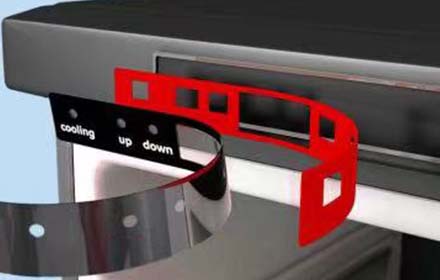
PE, short for Polyethylene, is the simplest structural polymer organic compound and the most widely used polymer material for protective films. It is made by polymerizing special polyethylene (PE) plastic films as substrates, and it can be divided into high-density PE, medium-density PE, and low-density PE protective films according to their different densities. Its properties include flexibility, good adhesion, easy application, easy-peeling, and residue-free removal.
The biggest advantage of PE protection film is to protect the product from pollution, corrosion, scratches, and maintain the original smooth and shiny surface during production, transportation, storage and use, thereby improving product quality and market competitiveness.
The application fields of PE protection film include stainless steel plates, aluminum plates, aluminum alloy profiles, plastic-steel profiles and doors and windows, aluminum-plastic panels, fluorocarbon panels, mirror panels, sandwich color steel panels, fireproof panels, decorative panels, organic glass panels, PS, PE, PVC board, polycarbonate board, security doors, signs, coated glass, high-end furniture, high-end crafts, electrical cabinets, computer cases, automotive lamps, flooring, household appliance shells, instruments, and various other areas where product surfaces need protection.
TPU and PU are mainly used in shoes and bars, so we will not elaborate on them here.
PE: that is, polyethylene, is widely used in the protective film industry. Its characteristics are: low price, flexibility, good stretch, environmentally friendly and pollution-free. Most products of this type have passed the ROHS environmental pollution test in the European Union. The disadvantage is poor weather resistance, and this material is not suitable for use in high temperature environments, generally below 60 degrees.
PVC: polyvinyl chloride, its characteristics are: good flexibility and better weather resistance (SPVC). The disadvantage is that it is not environmentally friendly, so many international big brands rarely use this material. This product is mainly used for anti-static protection and wooden speaker surfaces.
PET: polyester, its main characteristics are: good weather resistance, can withstand high temperatures of 100-150 degrees, good hardness and smoothness. The disadvantage is that it cannot be used on products with angles or corners and is mainly used for die-cutting.
PP: polystyrene, its characteristics are: it combines the characteristics of PE and PVC, is flexible, heat-resistant, and environmentally friendly, and is mainly used in the LCD industry.
Acrylic adhesive: widely used, good transparency and stability. However, differences may occur with time and environmental changes, such as decreasing adhesion over time.
Rubber: mainly used for black and white films, blue films, metal stamping, and other industries in the steel plate industry. Its main advantages are fast bonding speed and smoothness. The disadvantage is that it has more impurities and a short shelf life.
Silicone adhesive: high price, heat-resistant. The disadvantage is that the film may separate during use. Mainly used for scratch-resistant products.